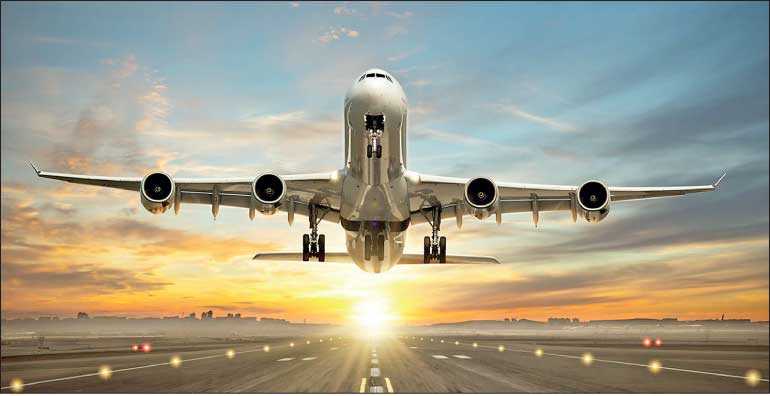Saturday Apr 19, 2025
Saturday Apr 19, 2025
Monday, 15 June 2020 00:00 - - {{hitsCtrl.values.hits}}

If airlines are to survive the many ‘unknown unknowns’ in the post-COVID world, reduction of their cost base has to be the first priority
The full impact of the COVID-19 pandemic on the airline industry is becoming apparent. With travel greatly restricted (if not impossible) since late March 2020, the airline industry has been in a tailspin. Many airlines have ceased to operate altogether or have initiated bankruptcy proceedings. Many more have suspended their employees, instituted pay reductions, frozen lease payments and even begged for financial assistance from their home countries. 
Hitherto proudly private and profitable giants such as British Airways and Lufthansa in Europe have joined the major carriers in the USA in accepting state subsidies in return for a variety of concessions.
The Gulf, with its trio of ‘Super Connector’ airlines, has been particularly badly hit. Once proud, even arrogant, purveyors of ultra-luxury travel with fleets of giant aircraft boasting on-board ‘apartments’ and showers for premium passengers, Emirates Airline, Etihad Airways and Qatar Airways (known as the ‘three sisters’ in the industry) were seemingly immune to failure. Even the Global Financial Crisis of 2008 saw only a slight reduction in the performance of the three main Gulf carriers. Emirates was even able to end its financial year in March 2020 with a record 31st consecutive profitable result.
Hubris comes disguised as a virus
The business plan of the three sisters was quite simple. Capitalising on the geographical position of the Gulf and deep pockets of an oil-rich treasury, Emirates was the first to create a ‘mega-hub’ at its base in Dubai. New-technology aircraft enabled the upstart airline to offer nonstop flights to every inhabited continent. It was soon possible to fly from almost any city in the world to any other city with just one stop – in Dubai. This saw the transformation of Dubai from a dusty trading port located in an inhospitable part of Arabia to a glittering mega-city, in the space of just one generation.
Qatar, another hitherto little known but mega-rich Gulf state, soon copied the Emirates business model and began growing a significant brand, founding an airline in 1993. Abu Dhabi, technically the capital of the UAE but playing second fiddle to Dubai in the Emirati orchestra, decided to join the party and set up Etihad Airways in 2003. All three of the ‘sisters’ relied on international traffic, as their home countries are too small to warrant any domestic flying.
The fragility of the international ‘super-connector’ business model became apparent as soon as COVID-19 began its spread. As airline traffic ‘fell off a cliff’ the connectors were left with empty aircraft and deserted airports.
Redundancies at Emirates
Last week Emirates began the first round of mass redundancies. Reports indicate that over 600 pilots and 6,500 cabin crew, plus many managers and administrative staff, have been let go. The airline had already imposed a 50% pay reduction on all its employees since April 2020.
Unlike most other airlines, which operate in a highly unionised environment, Emirates has few limitations on its operation. It has made some of the most senior pilots and cabin crew redundant. Some of these individuals have been with the company for over 30 years, helping guide it from humble beginnings with only two Boeing 727 aircraft, to its present size with more than 140 Boeing 777s and 115 giant A380s.
Reports indicate that those made redundant will not get a ‘package’ as is the norm elsewhere; only the minimum end-of-service payout and their provident fund monies. Because all are expatriates (no UAE nationals have been made redundant as far as we know) this will also mean the termination of their eligibility to reside in Dubai. For those who have bought property in the Emirate, their right to live in their houses seems to be in jeopardy.
Will Etihad and Qatar follow suit?
Unlike Emirates, which has been consistently profitable, Etihad has been a financial sinkhole for its owner. The 2019 result was a loss of $ 870 million, which was better than the 2018 result of $ 1.28 billion – adding to total losses of over $ 4.8 billion in years where Emirates made record profits.
Qatar Airways too has been losing money, albeit ostensibly at a lesser rate. In 2018 the airline’s loss of $ 69 million was labelled its worst ever. In 2019 the losses increased exponentially to over $ 639 million.
Given that most of their airplanes are grounded, it is impossible to imagine that these two airlines will not follow the lead of Emirates and make large portions of their staff redundant.
What are the implications?
The unprecedented growth of the ‘Gulf sisters’ meant upward pressure on personnel demands. Traditionally, pilots and cabin crew were recruited from an airline’s ‘home’ country. This meant that once employed, most pilots never left that airline – seeing out their careers to retirement in the same company.
Even the first ‘super-connector’ airline, Cathay Pacific Airways based in Hong Kong, made it a practice to only employ pilots from certain (western) countries, making job mobility impossible for most pilots. Singapore Airlines was one exception to this rule, but an ambitious cadet program saw the airline staffed by Singapore nationals by the turn of the century, with the last expatriate pilots being let go a few years ago.
Emirates was the first of the Gulf carriers to change this practice, not only offering career opportunities to individuals from more than 100 countries, but also ‘permanent’ jobs free of a time-limited contract. Many expatriate pilots found satisfying and long careers in the Middle East – this writer among them. This in turn, resulted in a significant skills drain from, literally, the entire world. The tax-free salary and benefits package offered in the Gulf became the gold standard that pilot unions the world over sought to emulate.
The significant reduction in Emirates’ workforce, will mean that the worldwide pilot ‘shortage’ will be at an end for many years, while those fortunate to still have jobs must face significant adjustments to their salaries. If airlines are to survive the many ‘unknown unknowns’ in the post-COVID world, reduction of their cost base has to be the first priority.